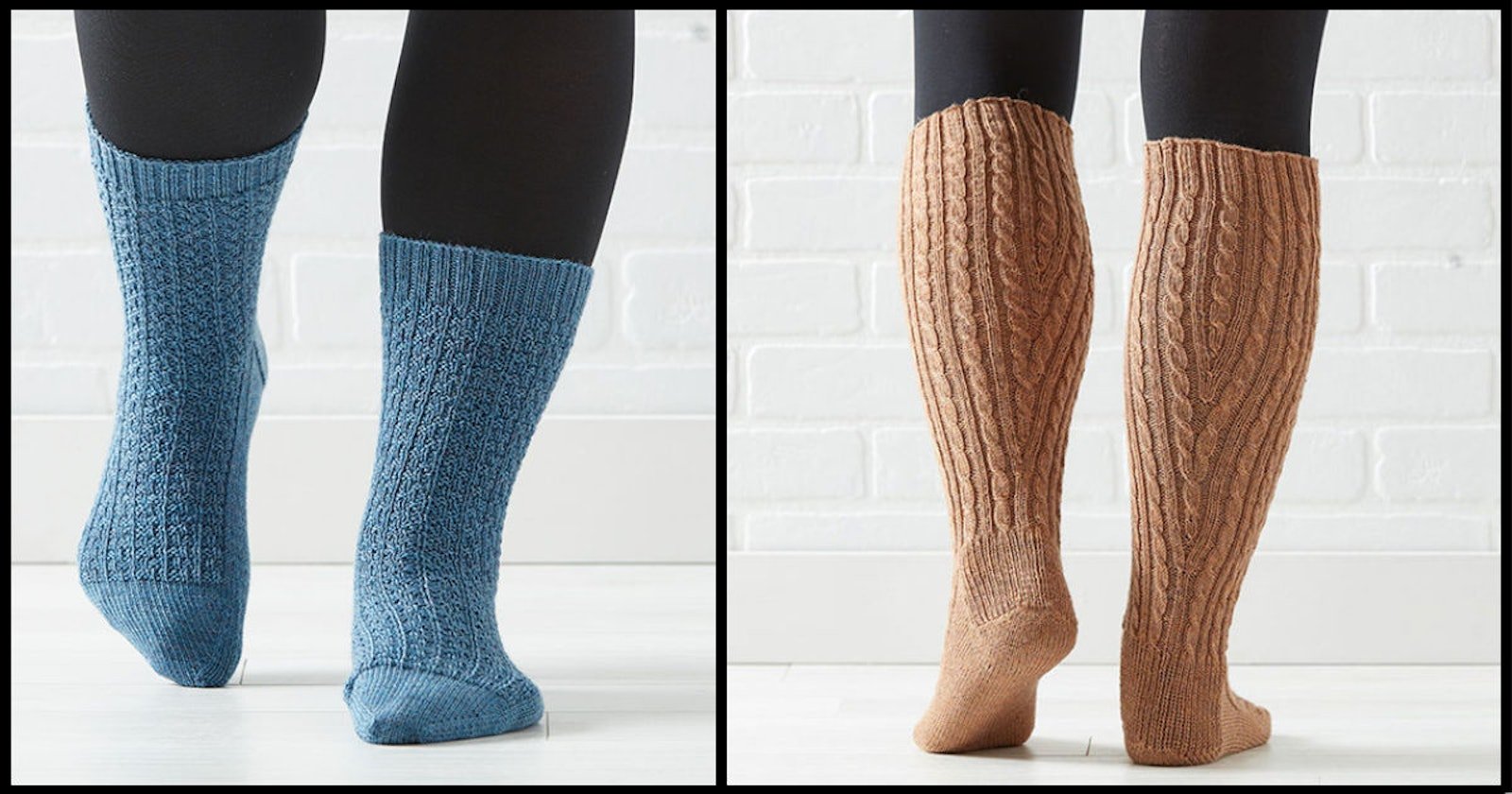Over the years, we at PieceWork have written a lot about the delightful patterns featured in Weldon’s Practical Needlework, and we’re especially smitten by Weldon’s Victorian-era socks. So much so, that we published several eBooks featuring the content within the Weldon’s Practical Stocking Knitter series. Here are some of the highlights that make knitting Victorian-era socks so intriguing:
Illustrations from Weldon’s Practical Needlework.
Heels
Are you in a plain-vanilla sock rut? Change up your usual heel with a Victorian version. You might even find one that fits you better. To find out more about Victorian sock heels, read our blog post “Tips for Practical Sock Knitting: 9 Sock Heel Types.”
Illustrations from Weldon’s Practical Needlework.
Toes
All good top-down socks come to an end or a toe. Knit a new-to-you sock toe from the Victorian era. Insert one into a favorite pattern or try one of the many sock and stocking patterns in Weldon’s. To learn more about Victorian sock toes, read our blog post “Tips for Practical Sock Knitting: 7 Sock Toes.”
The Vintage Bicycle Socks to Knit feature leg shaping for a perfect fit. Photo by George Boe.
Shaping
Many of the stockings and sock patterns published in Weldon’s contain little design details that are both practical and stylish. In this modern era of one-size-fits-all, leg shaping may be a new feature to many sock knitters, but this little aspect makes for a better fitting sock that stays up. Practical indeed!
Vicki Square's Vintage Railway-Stitch Socks pattern contains her comprehensive notes outlining her alterations to the original Weldon’s pattern. Photo by George Boe.
Victorian Knitting Terms
It’s true; sometimes, Victorian patterns can be confusing. Knitting needles sizes need to be converted, the terminology may sound a tad strange at first, sizing can be a mystery, and the yarn quantities aren’t spelled out. To help decipher Victorian knitting patterns, read our blog post “5 Tips for Reading Victorian Knitting Patterns.”
Victorian knitting patterns are a bit like reading Shakespeare. Once you start knitting, the language becomes second nature, and for timeless design, nothing beats a pair of Victorian-era socks!
—Elizabeth





